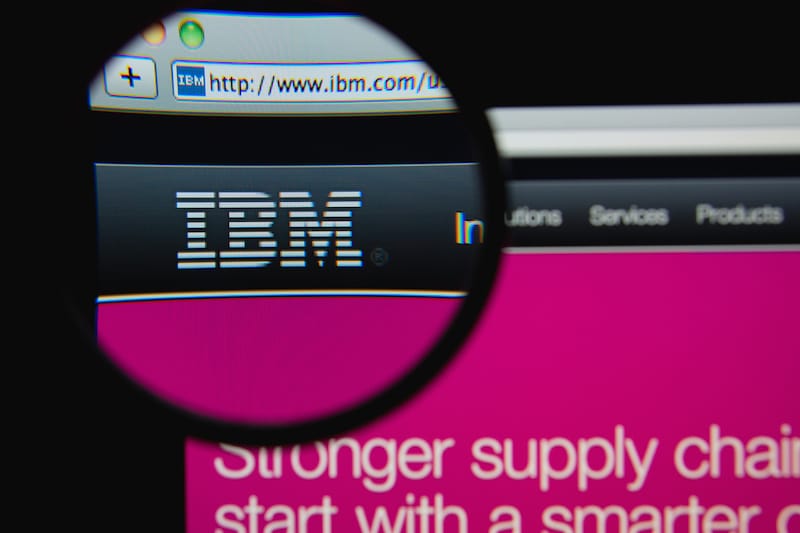"IBM"

New Partnerships Underline IBM’s Smart Building Ambitions
Last week, KONE, a global company in the elevator and escalator industry, entered into an agreement with tech giant IBM, where KONE will use IBM’s technology and experience to harness the potential of digitalisation and the Internet of Things (IoT) in smart buildings.
KONE stated that it “will use IBM’s Watson IoT Cloud Platform to collect and store equipment data, build applications and develop new solutions”. The platform will gather data from sensors and systems connected to elevators, escalators, doors and turnstiles in KONE’s maintenance base. Then, combined with IBM’s advanced analytics engine, that information will be used to enable new services and new experiences for customers.
“Our agreement with IBM is exciting and it is an important stepping stone to deliver the best People Flow experience”, says Henrik Ehrnrooth, President & CEO of KONE Corporation. “We operate in a connected world and by working with IBM, new solutions like improved remote diagnostics and predictability means we will deliver better services for our customers and great experiences for the people who use our equipment”.
With the IoT platform, KONE ecosystem partners and third parties can create new services and integrate existing services via Application Programming Interfaces (API). These new services will range from solutions that improve people flow in buildings and new smart building applications; to others that advance the speed, reliability and safety for elevator maintenance, as well as remote monitoring and servicing.
KONE will also work with IBM and its partners from various industries, through IBM’s global facilities, real estate and IoT developer ecosystems. This will bring global scope and scale to a development environment for new kinds of services for some of the world’s busiest cities and buildings.
“Efficient, people-centric cities and buildings are better for business, societies and economies. Central to this is how people move around within them, and intelligent systems are poised to make their experience more convenient, intuitive and enjoyable”, said Harriet Green, General Manager, IBM Watson Internet of Things. “With IBM’s cognitive IoT technologies, KONE is embedding intelligence across its operations and driving a wave of innovation in smarter buildings”.
A few days after the KONE announcement, at IBM InterConnect 2016, Siemens Building Technologies Division and IBM announced combined cloud-based solutions. The partnership will leverage Siemens’ building expertise and IBM’s IoT capabilities to maximise the potential of connected buildings and the data they create, helping corporate real estate owners across multiple industries drive business results and meet energy efficiency goals.
“Connected ‘things’ — everything from hospital beds, train tracks, cars, buildings and more are generating massive amounts of data that can be analysed to provide quick, actionable insights”, said Harriet Green, General Manager, Watson IoT, Education & Commerce at IBM.
Siemens will integrate software from IBM’s Watson IoT Business Unit into its own cloud-based Navigator energy and sustainability management platform. Consequently, predictive analytics can be applied for fault detection and diagnosis so potential issues can be addressed before anything happens and text recognition and analytics for utility invoice validation can identify billing errors and enhance data quality.
“By interfacing our Navigator platform with IBM’s software, we can bring Siemens’ proven expertise in energy optimisation and building performance together with IBM’s real estate and asset management systems to create an unrivalled combination that will dramatically improve the productivity of buildings”, says Matthias Rebellius, CEO at Siemens Building Technologies Division.
We wrote about these types of partnerships in an article earlier this week titled – The Evolution of BIoT… Will it be Top Down or Bottom Up? So we expect that to penetrate the existing retrofit business, which is potentially a much larger market than new construct buildings, to be pioneered by the major system suppliers joining forces with the major IT Software companies to deliver a cost effective Internet of Things in Buildings.
[contact-form-7 id=”3204″ title=”memoori-newsletter”]
These two agreements come less than a month after IBM announced it is collaborating with Wind River, a company delivering software for the IoT. The alliance intends to advance IoT deployments for industrial customers with new “edge-to-cloud” recipes designed to simplify and accelerate the development of smart connected devices.
The IBM and Wind River recipes and reference architectures also provide the necessary building blocks required for a complete IoT solution, including device management and the application of IBM machine learning to IoT. The reference architectures will include capabilities to manage and deploy devices and systems across market segments, including smart building, transportation, factory automation, and healthcare.
This raft of partnerships underlines IBM’s ambitions in the wider smart building sector, and its strategy to reach for those ambitions using the IoT. Building Automation Services (BAS) with a whole range of sensors and devices from building energy controls to physical security products are gradually but inevitably morphing into a more comprehensive and fully automated Building Internet of Things (BIoT) solution, and we have written extensively about this in a report – The Transformation of BAS into the Building Internet of Things – http://memoori.com/portfolio/transformation-BAS-to-BIoT-2015-2020/

IBM Wants to Create “Buildings Where People Want To Be, Not Just Need To Be”
ISS Group, a provider of facility services, has signed a commercial agreement with IBM to use the power of Watson IoT to transform the management of over 25,000 buildings around…

If ABB And IBM Conceived A Smart Grid Baby…
…for customers. IBM is a leader in artificial intelligence and cognitive computing,” says Spiesshofer. “Together, IBM and ABB will create powerful solutions for customers to benefit from the Fourth Industrial…

IBM & Threatcare Discover 17 Zero-day Vulnerabilities in Smart Cities
…by IBM entitled: The Dangers of Smart City Hacking. The paper follows an investigation by IBM X-Force Red and Threatcare that discovered 17 zero-day vulnerabilities in smart city sensors and…

IBM and Semtech launch LoRaWAN for The Internet of Things
…data over huge distances creates a situation that WiFi and GSM were never designed to deal with. Enter IBM Research and Semtech, who announced their new technology “LoRaWAN” (Long Range…

IBM Hackers Highlight Cyber Security Vulnerabilities in Smart Buildings
Ethical hackers from IBM’s X-Force tested a smart buildings automation system and encountered numerous serious security issues. The researchers identified several security holes that provide hackers with a backdoor into…

Adding Big Data and Analytics to the Smart Building Equation
Continuing our series of articles on Innovation we talked to Dave Bartlett, Vice President, IBM Smarter Physical Infrastructure, about IBM’s vision for the Smart Building market and the key emerging…

Strategic Alliances Focusing on the Building Internet of Things Gain Prominence
…platform. The unit announced in February 2016 that it was integrating software from IBM’s Watson IoT Business Unit, including analytics and asset management, into its platform. IBM and Siemens will…
